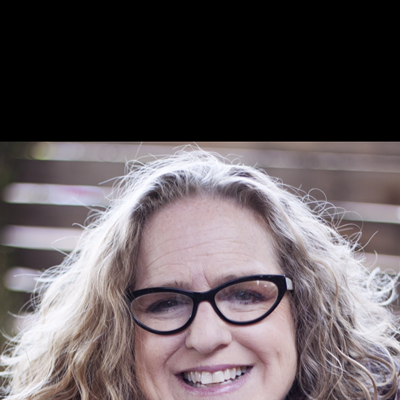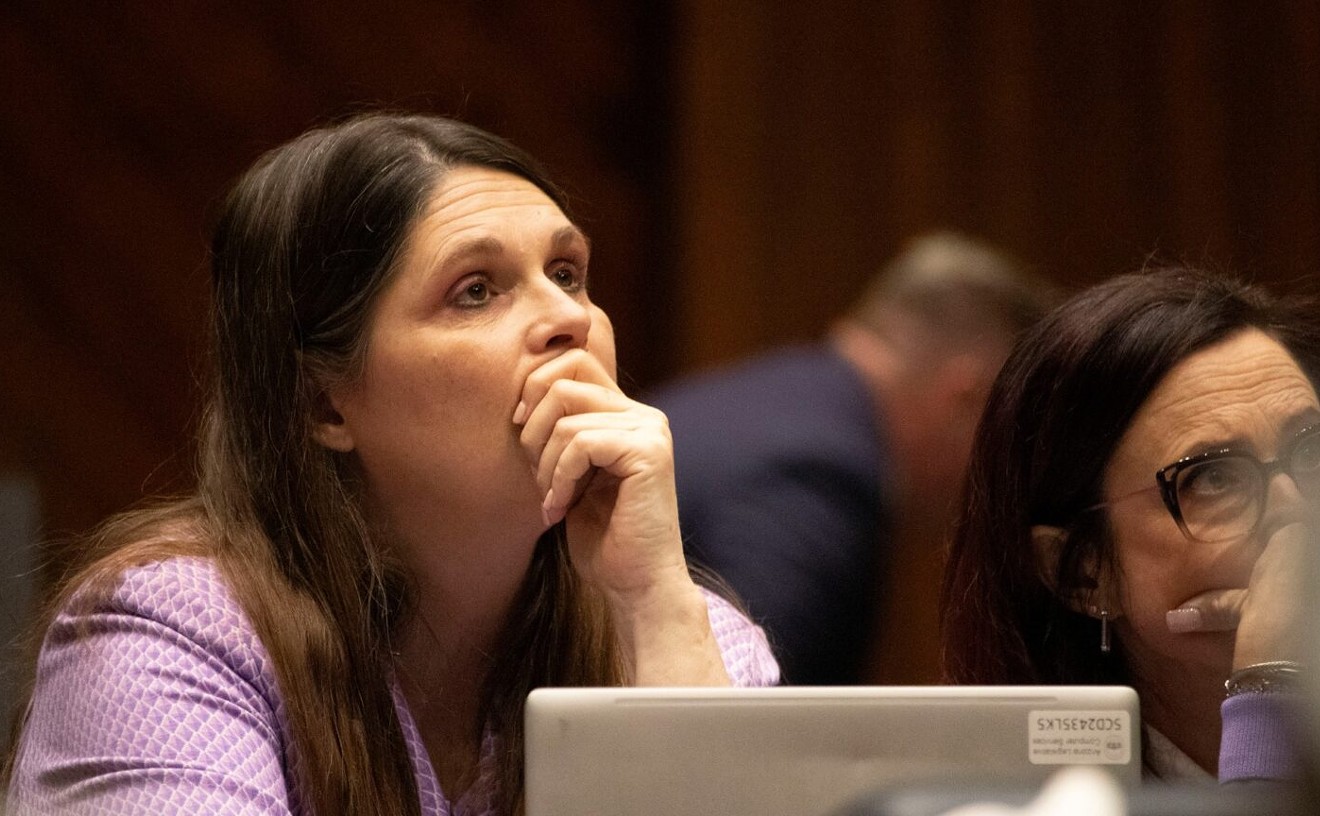The governor's made official her plan to close the Arizona Department of Juvenile Corrections, sending about 500 kids incarcerated by the state to the counties, thus cutting roughly $63 million from her budget.
The vast majority of these kids are from Maricopa County, placing the largest burden here. County officials immediately began complaining that they can't afford to take the kids — all except one official, Sheriff Joe Arpaio, who announced he'd happily take all 500 at no extra charge to anyone.
No one worth his salt wants Arpaio to have the kids, for obvious reasons — like his terrible record with adults. And it's hard to take him seriously, considering that every other sheriff in the state has signed a letter to the governor refusing to take this on.
So who will? Clearly the Governor's Office has some more work to do — if only from a public relations standpoint. Don Stapley, chairman of the Maricopa County Board of Supervisors, wrote to legislative leaders this week complaining that, as stakeholders, county officials weren't invited to the table to discuss the logistics of making these kids the counties' obligation. (Hard to know where she stands, since the Governor's Office didn't respond to a request for comment for this story.)
Part of the problem is that no one in a position of authority seems to know what sorts of kids they're really dealing with here — much less how to help them.
Maricopa County spokeswoman Cari Gerchick describes the population at the ADJC as "dangerous," but the truth is that only about 15 percent placed in ADJC facilities in 2009 were there for violent crimes, according to court statistics. (The rest violated probation or were convicted of misdemeanors or felony property crimes.) At least twice that number are seriously mentally ill and, by the department's own admission, do not belong in secure facilities. The system is ill and it's making sick kids sicker.
That's the danger. And, by and large, it's one best addressed, the experts agree, by community-based programs and therapy provided outside a locked facility. Judges need to be educated — perhaps a daunting task but one far less expensive than locking kids up and throwing away the key.
From Beth Rosenberg at the Children's Action Alliance to Anne Ronan at the Arizona Center for Law in the Public Interest to Brad Snyder — a Scottsdale-based, nationally recognized expert in the gathering of juvenile justice data and behaviors of adolescents — the advocates and experts are here. And they have ideas that would neither put dangerous hoods back on the streets nor create a Tent City Jr.
Their ideas do not include allowing Arizona's system to continue as is.
"There is no data to suggest that the ADJC, or any other youth authority in the United States, deters crimes," Snyder says. "In fact, data suggest that juvenile justice involvement is a predictor of future juvenile-justice involvement."
The examples of smart, safe, cost-effective juvenile-justice reform are all over — from a decades-old effort in Massachusetts to recent innovations in Kansas and Missouri. Even Pima County has taken part in a national program that has cut in half the number of kids it sends to correctional facilities, thereby saving a tremendous amount of money.
This seems the perfect time — a time when, for once, leaders in this state are discussing juvenile corrections — to embark on reform.
And yet Rosenberg, whose organization sent the governor a detailed letter on the topic, sounds defeated already.
"Unfortunately, I am not certain anyone is listening or really cares about real reform in the good sense of the word," she commented earlier this week.
Instead, the governor's trying to play Hot Potato by passing costs to other government entities, and here in Maricopa County, this is just one more reason for the sheriff and the Board of Supervisors to engage in battle. Too bad. But that's just part of Arizona's rich history when it comes to juvenile corrections failures.
It costs millions of dollars a year to incarcerate youth in Arizona. Add to that, dear taxpayer, the amount it's cost the federal government to investigate the ADJC for civil rights abuses over the past few decades.
In 1987, Johnson vs. Upchurch led to years of litigation and investigation, and eventually federally mandated and monitored changes at the ADJC, which had kept one boy in solitary confinement for weeks.
For a while, according to advocates and employees at the time, things got better. That didn't last. But the ADJC — which has for some reason never attracted the attention of many outsiders, including the governor and state legislators responsible for its funding — flew under the radar for years.
A couple of anonymous tips from employees led to a New Times investigation in 2001, which let loose an avalanche of records detailing abuses: the continued inappropriate use of solitary confinement, poor healthcare, substandard education, lack of training for employees, physical and sexual abuse of kids by staff — and more.
Coincidentally, around the same time the stories appeared, there were three successful suicide attempts. The deaths accelerated a process that had already begun and led to an investigation by the U.S. Department of Justice.
Again, more findings and more monitoring. And, again, a lack of oversight once the investigation was wrapped up in 2007.
By last year, department officials were congratulating themselves on the fact that there had not been a successful suicide attempt since 2003, as detailed in a state Auditor General's report. But the auditors didn't consider how many kids came close. Another New Times investigation revealed that the ADJC has, like many juvenile-corrections facilities around the country, become a mental-health asylum — something the deputy director over mental health services has acknowledged herself.
To be fair, in many ways, Arizona's juvenile-corrections system was set up for failure. It's widely acknowledged that incarceration — at least, the way the ADJC does it — simply does not work. Nor is it appropriate for the population.
There are plenty of examples of places that do it better. Just ask Aaron Kupchik, a sociology and criminal justice professor at the University of Delaware and author of a book called Judging Juveniles.
The idea of disbanding a juvenile-corrections system is scary and controversial, but not unheard of, he says. In the 1970s, the head of Massachusetts' program, Jerome Miller, shut down the state's facilities. He sent the most serious offenders to mental-health facilities and the rest to halfway houses, Kupchik says.
"It saved the state money. It was more humane. And there was really no consequence crime-wise. Of course, it cost [Miller] his job because people were so outraged that he would do this."
More recently, reforms have happened in several states, including Kansas and Missouri. The change wasn't as bombastic as what came to be known as "The Massachusetts Experiment," but it's been significant. And it hasn't gone unnoticed by Arizona juvenile-corrections officials. Several years ago, a group traveled to witness firsthand the Missouri model, which takes seriously the idea of treating kids like human beings — putting them in dormitory-like settings, rather than cells.
The sentiment was clearly lost here. Consider Arizona's juvenile-corrections "mission statement," as compared with that of Kansas, another state that has reformed its system to incarcerate as few kids as possible. In Kansas, the Juvenile Justice Authority strives to "prevent youth from becoming involved in the juvenile justice system," while the ADJC "enhances public protection by changing the delinquent thinking and behaviors of juvenile offenders committed to the department."
Closer to home, at least one county has shown that, even in Arizona, the conventional thinking can be changed. Pima County has worked for several years with the Juvenile Detention Alternatives Initiative, sponsored by the Annie E. Casey Foundation, and has cut the number of kids it sends to county detention and the ADJC in half. On its Web site (aecf.org), the JDAI details how its practices save money, cut down on racial discrimination, and protect public safety. Pima County officials are pleased with their success.
This is what should happen statewide, says attorney Ronan.
"The communities these kids live in need to take responsibility," she says, adding that the fact that few would actually need to be locked up and others would be eligible for Medicaid treatment would mitigate costs significantly.
Back here in Maricopa County, spokeswoman Gerchick is still concerned about the potential cost — in many ways — of a too-simple shift of responsibility from the state to the county.
As she observes, "We can't even get it right for adults."











